It’s no secret that skateboarders enjoy a unique sport. In fact, it’s a lifestyle, an art form, and so much more than just a sport! There are so many benefits to skateboarding!
Health Benefits of Skateboarding: Physical, Mental, Social
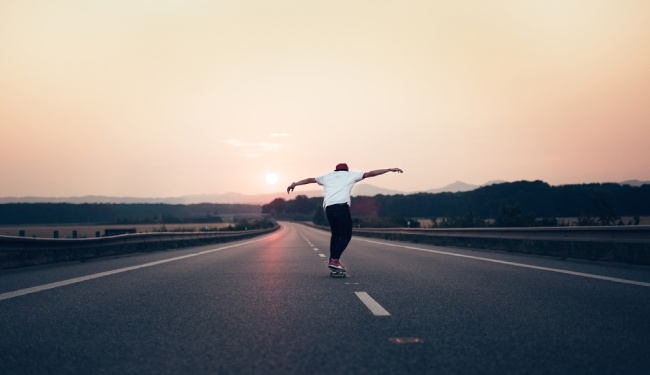
1. Getting outdoors
Skateboarding gives you the opportunity to get outside in the fresh air. You can skate the streets or enjoy a ride through the park.
2. Stress reliever
While physical activity generally relieves stress, skateboarding is thought to be particularly effective in this regard. While skateboarding, your mind is taken off of things.
You can also think more clearly while skateboarding. When you skateboard, you feel like you’re in control of your life and can put things into perspective.
Skating also helps you relax. You can greatly reduce or even eliminate a lot of life’s troubles once you’ve mastered things like handrails, concrete bowls, and stair sets.
You will also feel more confident and competent after mastering landing tricks. Skateboarding is simply a lot of fun!
3. Improved muscle and joint health
You can also build your muscles by skating. This is just as effective as the other muscle-building exercises.
All of your muscles and joints must work effectively to do tricks such as ollies, kickflips, hardflips, hillflips, toe flips, and dolphins.
The muscles grow and get stronger when you do it on a regular basis for a few months.
4. Learnt practice and patience
Beginners know how hard it can be to learn how to skate and do tricks. It takes patience.
When it comes to learning tricks such as the kickflip or ollie, you need to learn. Ultimately, you learn how to be more patient.
5. Social Benefits
It is common to see neighbours or anonymous skaters joining you in a park or street. Introduce yourself and make some friends.
There is always a chance for skaters to be more social and friendly within the community: The ability to build new relationships.
6. Increased pain tolerance level
A bruise or bump. Scratches and scars. Pain and discomfort. Skateboarding is all about them. Our love of skateboarding makes us willing to take the pain and abuse.
We are willing to take abuse because of our love of skateboarding. Small injuries usually heal themselves. You soon forget about them.
The first kickflip you ever did, the first drop-in you ever did, and the first rail you ever crossed will always be remembered. With each punch you take, it gets easier. Everybody falls. Everyone gets up. Everybody tries again…
7. Helps overcome fear
By wearing safety gear, dangers can be minimized. Beginners will likely be afraid of getting hurt, but the fear will eventually fade with practice. The elbows, knees, wrists, shins, and psalm are often the most likely to be injured.
In addition to the injuries, skateboarders learn to tolerate pain better by experiencing it more often.
8. Learn street smarts
Despite its reputation for danger, the right safety equipment can make skateboarding much safer. Skateboarding is an excellent way to learn traffic rules for someone who is hitting the streets for the first time.
This sport also allows you to gain more awareness of your surroundings and learn how to interact with traffic.
9. It’s just fun!
Skateboarding is definitely a great way to have a lot of fun and spend a lot of time with your friends. A speedy ride, a good time with friends, and taking in the city are a great combination. Rides become new experiences, an opportunity to see the city from a new perspective.
10. Increased flexibility
Skating requires so much of your body that there aren’t many other activities like it. Each part of our body is being used when we skate, and they are being used in all sorts of directions.
It might seem simple but a frontside boardslide involves a lot of work. While you balance with your arms, you move your legs and feet.
As a result, you twist your body. As you skate, consider all the tricks that may come your way.
Imagine what combinations you could do! This type of variety in movement may not be found in any other sport.
11. Helps with your coordination
After trying a trick and not landing it, you try again. This time you tweak it a little. Put your feet in a different spot. Time it differently. Change your pace. Change your landing. You adjust everything until you get it right.
When skateboarding, eye, leg, foot, and arm coordination are all necessary. You will get better at this as you skate more.
Whether you skateboard or not, you use precision and coordination all the time. By improving these traits, you become more capable of all kinds of tasks, from driving to climbing to multitasking.
12. Skateboarding is cheap
Skating also fits every budget. Toy stores carry skateboards, which start at just $24. They are great for beginners.
There are also cheaper second-hand skateboards available online. The average skateboard lasts for about 5 to 6 years. Safety gear is the only additional expense.
13. Helps build stamina
You can skate all day. Also at night if you like. That’s a common saying. We still skateboard as long as we can even though it exhausts us and beats us up. We are able to do more as we practice.
So, why does skating have a higher percentage of this happening than other sports? What is it about skating that makes us do it more in a day than other sports? Simple. It’s fun.
14. Increased self-esteem
A sense of accomplishment can be derived from pulling off an excellent trick, especially after spending so much time preparing. Skaters can gain a sense of achievement and self-confidence from this.
People can also feel better about life when they become more confident about themselves. Skateboarding has health benefits too, such as improving self-esteem.
15. Improved heart problems
Health conditions have been shown to be reduced or eliminated by physical activity.
Skating can help to lower the dangerous risks of heart disease, diabetes, high blood pressure and obesity.
The act of skating also reduces the body’s triglyceride levels. In addition, it helps you maintain a healthy lifestyle by keeping cholesterol levels low. Consequently, your risk of heart disease is reduced.
16. You learn to fall correctly
In skating, you learn how to fall correctly and avoid falling when possible. With increased skating experience, skateboarders get more comfortable placing their hands and feet.
A tool like this is important because it reduces the chances of freak accidents. Slips, trips, and stumbles will be easier to recover from, and you will be more likely to avoid slipping.
17. Teaches you precision
Workouts of this type strengthen the body and allow deeper movements while stabilizing it.
Skateboarding improves flexibility most of all areas of fitness.
Fitness depends heavily on flexibility, and it is often neglected. It shouldn’t be. The look of longer, leaner muscles is better than that of buff muscles.
18. Burning off calories
Staying in great physical shape and burning calories is one of the biggest benefits of skateboarding.
Since some days you may skate harder than others, it isn’t simple to calculate how many calories you burn during skating.
In comparison to most other physical activities, skating burns more calories. Your caloric burn per hour may vary from 150 to 500 calories, depending on your size.
19. Full-body workout
Skateboarding benefits your health in more ways than one. Depending on the intensity of their workout and their level of self-discipline, many people work out for a specific amount of time.
You can skateboard for hours throughout your city or town as you go from location to location. Skateboarding requires regular movement of your torso, feet legs and arms.
This can be a full-body workout.
20. Skills can be used for other sports
Wakeboarding, snowboarding, and surfing are some examples. Skateboarding can be an excellent way to keep fitness levels high and skills sharp when the waves are rough, the snow is melting, and the water is too cold.
Balancing skills, focus, and muscle work out are all needed for these sports.
Possible Dangers in Skateboarding
1. Injuries
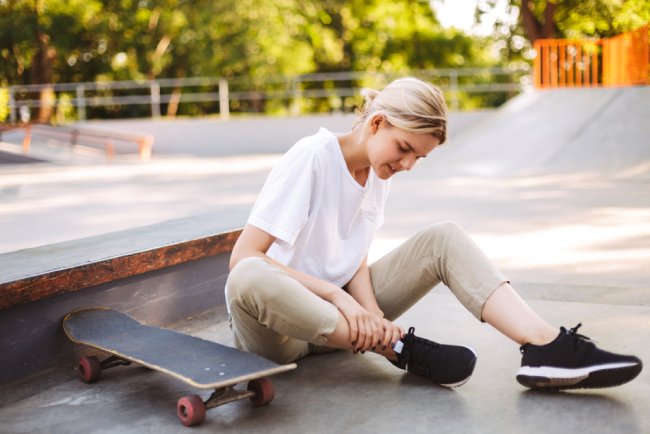
- Young skateboarders face the greatest risk of head injuries, including concussions. You can suffer permanent impairment and even death in extreme cases.
- Losing balance and falling on an outstretched arm can result in hand, wrist, and shoulder injuries.
- Fractures of the ankle are also common injuries
2. Running into other traffic
There is an increased risk of colliding with a vehicle or a pedestrian when skateboarding on busy streets.
Keeping yourself and others safe requires avoiding crowded areas and traffic. When you skateboard at high speeds, you are more likely to suffer head injuries.
Before every skateboarding session, inspect the skateboard for cracks or nicks. You should never ride a skateboard with another person. Avoid wearing headphones and stay alert at all times.
3. Dangerous tricks
You put yourself and others in danger by taking risks or making moves beyond your ability. If you are not experienced, do not make jumps or high-speed movements. Tricks should only be performed in skate parks that offer emergency medical care and monitoring.
You should never skitch, a trick that involves skateboarding while holding onto a moving car. Turning or stopping suddenly could throw you into moving traffic or cause you to strike a hard surface.
4. Weather conditions
Weather conditions increase this risk but are often overlooked. Snow, ice, and rain make it difficult to go out and ride in winter and autumn. When it’s wet, skating can be dangerous, since ice roads can be slippery.
The surface of your skateboard can become slippery along with your shoes. You will give out your bearings much quicker and let’s not even begin to talk about sand and water getting into your bearings.
Other risk factors include falling leaves, which can lead to a nasty fall.
Tips for Safe Skateboarding
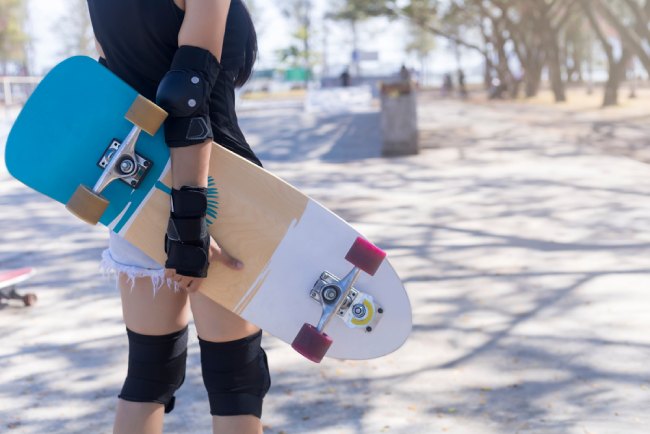
1. Use the correct board
In the world of skateboarding, quality matters, and that is why you should pay attention to the price. Skateboards come in a variety of shapes and sizes, depending on your skill level and your riding style. A short deck is ideal for beginners. The board is easier to balance and it is easier to ride.
2. Check your board
If you are going to use your skateboard, make sure that it’s in good working condition before riding it. Check your wheels for cracks and the board. Also make sure the grip is in order. Never ride on skateboards that need repair.
It is vital to inspect your board regularly and keep it in good working condition. You should replace your skateboard deck if you think it is about to break
3. Set your limits
Some challenges face board riders, such as staying in control. When you’re just starting out, make sure you learn the basics. Stopping is one of them – a big one.
Don’t practice in a crowded area or where there’s a lot of traffic. Be sure to skate in open areas where there is nothing you can fall off and hit or crash into.
4. Wearing protective gear
Safety requires protective gear. Wearing high-quality ear can help to prevent you from being injured.
- Helmet
- Elbow pads
- Knee pads
- Wrist guards
- Shoes
Most preventable injuries occur because of improper gear. Before using it, inspect it thoroughly.
It should be in good condition and broken pieces should be replaced.
Replace your helmet every three years or so. If your safety equipment needs to be replaced, follow the instructions provided by the manufacturer.
5. Use areas designed for skateboarding
There are many good skateboarding areas without traffic or other dangers. The ramps and bowls in skateboard parks are designed to keep you safe while also providing a great ride. These areas offer a safe place to skate.

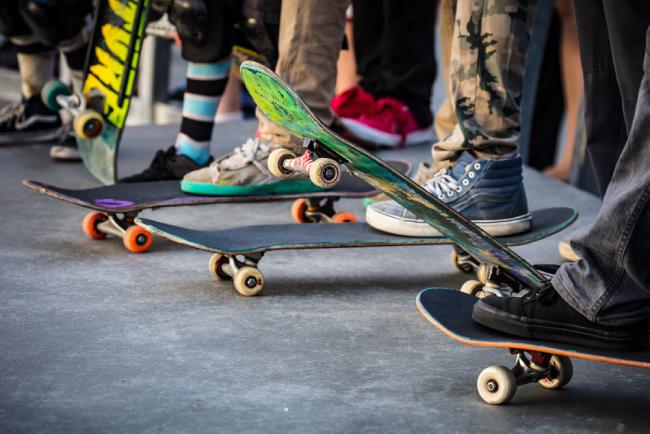
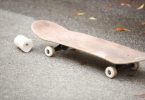
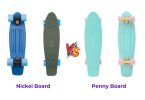
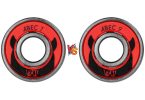
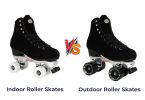

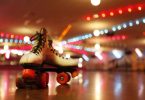

Leave a Comment